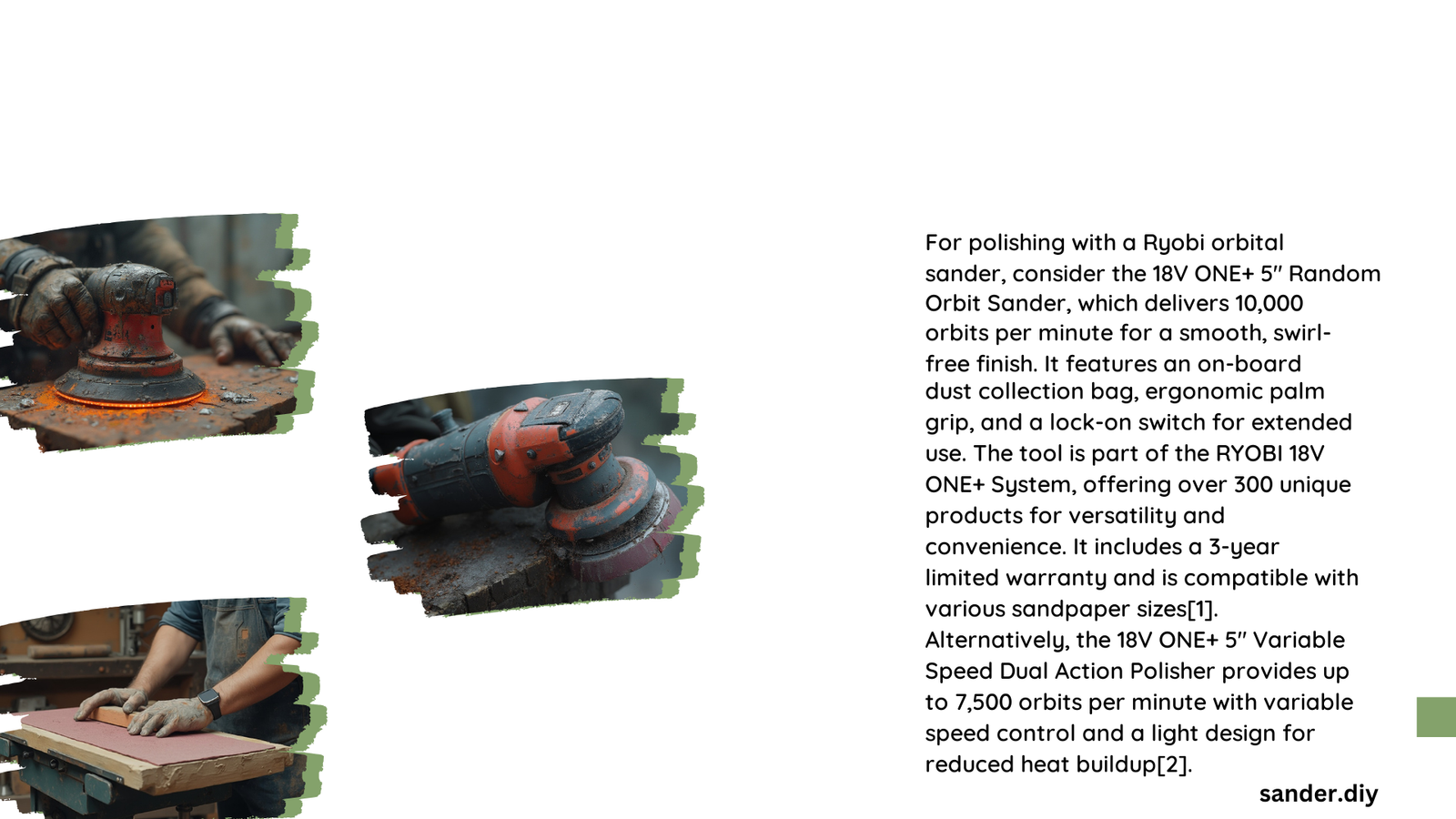The Ryobi orbital sander, while primarily designed for sanding tasks, can be adapted for light polishing applications. However, it’s important to note that for more intensive polishing work, a dedicated dual-action polisher is generally recommended. This guide explores the capabilities of the Ryobi orbital sander in polishing contexts, discusses compatible accessories, and provides insights into achieving the best results when using this versatile tool for polishing tasks.
What Are the Key Features of Ryobi Orbital Sander for Polishing?
The Ryobi orbital sander offers several features that can be beneficial when adapted for polishing:
- Variable speed settings
- Ergonomic design for comfortable use
- Dust collection system
- Compatibility with various pad types
While these features are primarily designed for sanding, they can be leveraged for light polishing tasks with the right accessories and techniques.
How Can You Adapt Ryobi Orbital Sander for Polishing Tasks?

To use the Ryobi orbital sander for polishing, consider the following adaptations:
- Pad Selection: Replace the standard sanding pad with a softer polishing pad.
- Speed Adjustment: Use lower speed settings for polishing to prevent heat buildup.
- Pressure Control: Apply light, even pressure to avoid damaging the surface.
- Motion Technique: Use smooth, overlapping circular motions for even coverage.
It’s crucial to remember that while these adaptations can work for light polishing, they may not achieve the same results as a dedicated polisher for more demanding tasks.
What Are the Compatible Polishing Pads for Ryobi Orbital Sander?
While the Ryobi orbital sander is not specifically designed for polishing, you can use compatible polishing pads with the right attachment. Here’s a table of potential pad options:
| Pad Type | Material | Best For |
|---|---|---|
| Foam Pad | Soft Foam | Light polishing and finishing |
| Microfiber Pad | Microfiber | Final buffing and shine |
| Wool Pad | Natural Wool | More aggressive polishing |
Always ensure the pad is securely attached and compatible with your specific Ryobi orbital sander model.
What Speed Settings Are Optimal for Polishing with Ryobi Orbital Sander?
When using the Ryobi orbital sander for polishing, speed settings are crucial:
- Start with the lowest speed setting (typically around 4,000 OPM)
- Gradually increase speed if needed, but avoid the highest settings
- Monitor the surface temperature to prevent damage
Remember, the optimal speed can vary depending on the surface material and the polishing compound used.
How Effective Is the Dust Collection System During Polishing?
The dust collection system on Ryobi orbital sanders is designed primarily for sanding operations. For polishing tasks:
- Effectiveness may be reduced due to the nature of polishing compounds
- The dust bag may collect some residue, but not as efficiently as during sanding
- Regular cleaning of the dust port is essential to maintain suction
Consider using a separate vacuum system for more effective debris collection during polishing tasks.
What Are the Best Techniques for Polishing with Ryobi Orbital Sander?
To achieve the best results when polishing with a Ryobi orbital sander:
- Prepare the surface thoroughly before polishing
- Apply polishing compound sparingly and evenly
- Use light, consistent pressure
- Work in small sections, overlapping slightly
- Keep the sander moving to avoid heat buildup
- Clean the pad frequently to prevent compound buildup
Remember that the orbital motion of the sander may leave swirl marks, so extra care and patience are required for a high-quality finish.
What Are the Limitations of Using Ryobi Orbital Sander for Polishing?
While the Ryobi orbital sander can be used for light polishing, it has limitations:
- Less control over polishing patterns compared to a dual-action polisher
- May not achieve the same level of gloss as specialized polishing tools
- Limited pad options specifically designed for polishing
- Potential for swirl marks due to the orbital motion
For professional-grade polishing or large surface areas, consider investing in a dedicated polishing tool.
How Does Ryobi Orbital Sander Compare to Dedicated Polishers?
Here’s a comparison between using a Ryobi orbital sander for polishing and a dedicated polisher:
| Feature | Ryobi Orbital Sander | Dedicated Polisher |
|---|---|---|
| Primary Function | Sanding | Polishing |
| Polishing Efficiency | Moderate | High |
| Pad Compatibility | Limited | Extensive |
| Control | Good for sanding, less for polishing | Excellent for polishing |
| Versatility | High (sanding and light polishing) | Limited to polishing tasks |
| Cost | Generally more affordable | Can be more expensive |
While the Ryobi orbital sander offers versatility, a dedicated polisher provides superior results for intensive polishing work.
In conclusion, the Ryobi orbital sander can be adapted for light polishing tasks with the right accessories and techniques. However, for professional-grade polishing or frequent use, a dedicated polishing tool may be a better investment. Always consider the specific requirements of your project when deciding between adapting a sander or using a specialized polisher.
